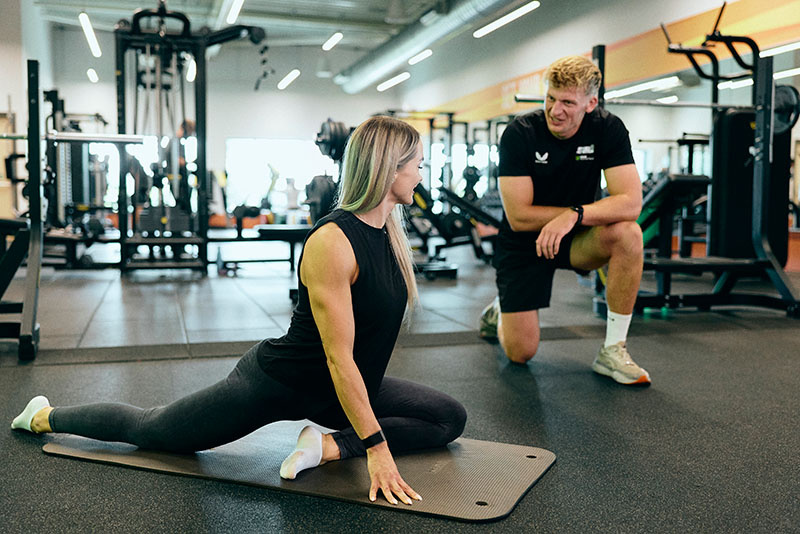Author: Oliver Kerr, Regional Director (South) at YOUR Personal Training.
To legally train clients on a one-to-one basis in the UK, you must hold a Level 3 Personal Trainer qualification; a Level 2 Gym Instructor certificate alone isn’t enough.
If you’re planning to start a career as a Personal Trainer in the UK, you’ll come across two main qualifications: Level 2 Gym Instructor and Level 3 Personal Trainer. Below, we explain the difference between the two qualifications, and what you can do with both. (Estimated read time ~3 minutes.)
What is a Level 2 Gym Instructor Qualification?
Level 2 is your entry point into the fitness industry. It qualifies you to work as a gym instructor, guiding members on how to use equipment safely and supporting general fitness goals.
What You Can Do with Level 2
- Work in a gym or leisure centre as a fitness instructor.
- Lead inductions and small group sessions.
- Offer general exercise advice and support.
What You Can’t Do with Level 2
- Provide one-to-one personal training.
- Design personalised training programmes.
- Charge clients independently for PT services.
What is a Level 3 Personal Trainer Qualification?
The Level 3 Personal Trainer qualification is the industry standard for working as a PT. It builds on Level 2 and qualifies you to coach clients one-on-one, design tailored programmes, and run your own business.
What You Can Do with Level 3
- Work as a fully qualified personal trainer.
- Deliver 1:1 or small-group sessions.
- Set up as self-employed or freelance.
- Create nutrition and fitness plans aligned with public health guidelines.
| Category | Level 2 Gym Instructor | Level 3 Personal Trainer |
|---|---|---|
| One-to-One Training | Not permitted | Full one-to-one PT sessions |
| Programme Design | Basic general fitness programmes for healthy adults | Personalised, periodised training plans for diverse clients |
| Client Assessments | Simple health screening (PAR-Q) | Comprehensive fitness assessments and progress tracking |
| Nutritional Advice | General healthy lifestyle information only | Nutritional guidance aligned with public health guidelines |
| Group Exercise | Can lead group fitness classes | Can lead group sessions plus individual coaching |
| Where You Can Work | Gym floor supervision, fitness facilities | Gyms, studios, outdoors, online, or self-employed |
| Course Duration | 2–5 months | 4–12 months |
| Legal Requirement for PT Work | Not sufficient for personal training | Minimum qualification required for PT practice |
| Professional Status | CIMSPA Gym Instructor Practitioner | CIMSPA Personal Trainer Practitioner |
Combined Level 2 & Level 3 Diploma
Many providers now offer a combined Level 2 + Level 3 Diploma in Personal Training. This option saves time and ensures you’re fully qualified upon completion.
Benefits of the Combined Diploma
- One streamlined programme.
- Reduced cost compared to separate enrolments.
- Quicker path to becoming job-ready.
Check out YOUR Academy’s PT Essentials course, which combines both Level 2 and Level 3. It’s comprehensive and competitively priced, with expert support from qualification through to a successful career—plus our Advanced Business Course at no extra cost to help you build a thriving PT business.
Accreditation and Recognition
When choosing a training provider, make sure your qualification is:
- CIMSPA-endorsed (Chartered Institute for the Management of Sport and Physical Activity).
- Ofqual-regulated (official UK government qualification regulator).
Why it matters: Only accredited qualifications are recognised by employers, gyms, and insurers. All our courses are fully accredited, and we hold a CIMSPA Enhancing status—recognising high-quality provision aligned with national standards and best practices.
Final Thoughts
To work as a professional Personal Trainer in the UK, Level 3 is non-negotiable. Level 2 gets your foot in the door; Level 3 unlocks the freedom to build a full-time career and grow your income.
Next step: Explore YOUR Academy’s Level 3 personal trainer course options and take the first step toward your dream career.

